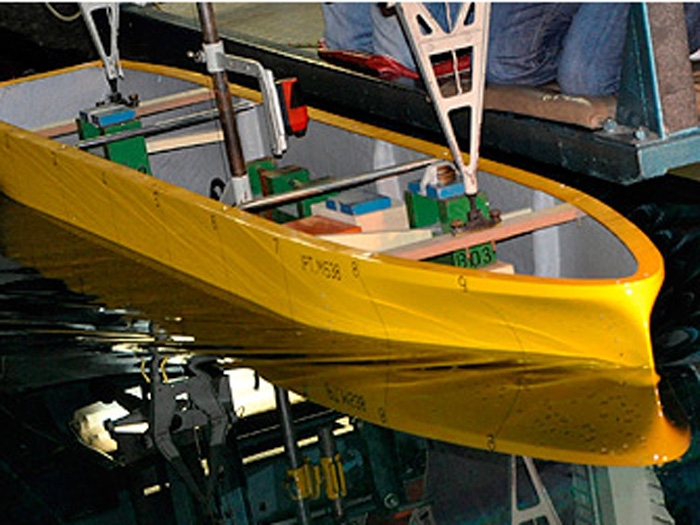
New LNG ship design promises 3-5% fuel savings
Written by Nick Blenkey
JANUARY 20, 2016 — In an effort to gain fuel efficiencies even better than those currently being delivered by shipbuilders, BG Group is developing an LNG ship hullform that, it says, promises fuel savings — and emissions reductions — in the range of 3-5%.
Called “Blue Amazon,” the project is being carried out in the Amazônia Azul region of Brazil. It has been facilitated by BG Technology Group in Brazil and carried out in collaboration with classification society Bureau Veritas (BV); BV’s technology partner HydrOcean; LNG containment system specialist GTT; Instituto de Pesquisas Tecnológicas (São Paulo) and Universidade Federal do Rio de Janeiro.
“The idea was to achieve the highest level of efficiency by trying to improve upon the best designs currently being built at the shipyards that BG partners with,” says Michael Davison, BG Group’s project development manager for ship design and construction, who has been overseeing the endeavor. “Our task was to try and independently create a new, highly efficient hull form and general arrangement for an LNG ship.”
The team took an approach that was not restricted to following the industry-standard shape and arrangement of the ship’s LNG cargo tanks.
“That meant we could be a bit creative with the shape of the hull and make it more effective in both calm water and in waves,” says Mr. Davison.
The process also considered how the design would affect vessel construction. A central concept of the project is to ensure that the new design is practical and cost-effective to build.
Over 18 months, the Blue Amazon team ran many iterations of computer modeling, testing, and improvements to develop the best design.
“We’ve carried out over two thousand numerical computations on very powerful networked computers to create models that understand how the new hull would perform,” says Mr. Davison, noting that “shipyard design teams are typically constrained in this respect by time and by physical resources including specialist software licences and computing power.”
The project team used software created for the purpose by HydrOcean based on an advanced computation fluid dynamics process (known as RANSE) that can simulate very complex turbulent flow conditions in various operating environments.
The computer-generated ship design is a visibly different ship shape, notably at the bow.
The project team then built a scale model and tested it at facilities at Instituto de Pesquisas Tecnológicas in São Paulo. The team modeled sailing at three speeds, two LNG loading conditions, and various wave conditions.
The final vessel design is expected to require less propulsive energy and to save fuel and emissions by 3-5% compared with traditional designs.
“Three to five percent savings may not sound much, but if you’ve got a large fleet of say 30, 40 ships, each burning around 80 tonnes of fuel a day, you can imagine the emissions and commercial advantage of such savings,” says Mr. Davison. “Over a year, a fleet of such ships would be saving approximately 32,000 tonnes of LNG fuel.”
BG Group recently discussed the design with Korean shipyards and received their feedback.
“The project teams – considering they’re not shipbuilders – have created a good design to start challenging the yards,” says Mr. Davison.
The final design is expected to emerge in March 2016, and BG Group says “the team looks forward to industrializing it thereafter for the next wave of shipbuilding orders.”






Leave a Reply
You must be logged in to post a comment.